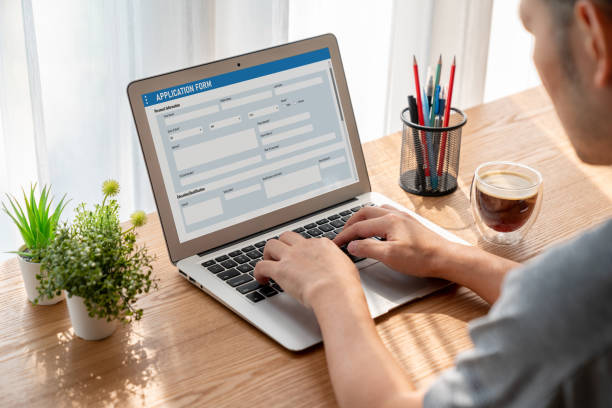Creating engaging and effective forms is crucial for capturing valuable information and driving conversions in today’s fast-paced digital world. Whether you’re collecting feedback, conducting surveys, or generating leads, the quality of your forms can significantly impact your success. Typeform, a leading online form builder, offers an intuitive platform designed to help you craft forms that look great and perform exceptionally well. So, in this blog post, we’ll dive deep into how to create high-converting forms with Typeform, providing you with practical tips and strategies to enhance your form’s effectiveness.
1. Understand the Purpose of Your Form
Before diving into Typeform’s features, clearly defining your form’s purpose is essential. Also, are you looking to gather customer feedback, generate leads, or conduct market research? Additionally, understanding your goals will help you design a form that aligns with your objectives and resonates with your audience.
Key Considerations:
- Define your target audience.
- Determine the type of information you need to collect.
- Outline the goals you want to achieve with the form.
2. Leverage Typeform’s User-Friendly Interface
Typeform is renowned for its user-friendly interface, making it easy for anyone to create visually appealing and functional forms. So, start by choosing a template that fits your form’s purpose. Additionally, Typeform offers a wide range of pre-designed templates, from feedback surveys to registration forms, that you can customize to suit your needs.
How to Get Started:
- Sign up for a Typeform account and explore the template library.
- Select a template that aligns with your form’s objective.
- Customize the template to match your branding and specific requirements.
3. Craft Clear and Engaging Questions
The success of your form largely depends on the quality of your questions. Also, clear, concise, and engaging questions can make the difference between a form that’s completed or abandoned. Additionally, Typeform’s conversational approach to form-building helps create an engaging experience for users, reducing the likelihood of drop-offs.
Tips for Crafting Effective Questions:
- Be Specific: Avoid vague questions that can confuse respondents. So, be direct and specific about what you want to know.
- Use Conversational Language: Typeform’s unique design allows for a conversational tone, making the form feel more personal and engaging.
- Keep It Short: Long forms can be overwhelming. Focus on asking only the most important questions to keep users engaged.

4. Incorporate Logic Jumps for a Personalized Experience in Typeform
One of Typeform’s standout features is its logic jump functionality. Also, this feature allows you to create dynamic forms that adapt based on user responses. So, by incorporating logic jumps, you can tailor the form experience to each respondent, providing a more relevant and personalized experience.
How to Implement Logic Jumps:
- Identify Key Decision Points: Determine which questions will influence the next set of questions.
- Set Up Logic Jumps: Use Typeform’s logic jump feature to direct users to different questions based on their previous answers.
- Test Your Form: Ensure that the logic jumps work seamlessly and lead to the desired outcomes.
5. Design for Visual Appeal and User Experience
Aesthetics play a crucial role in form conversion rates. Additionally, Typeform’s customizable design options allow you to create visually appealing forms that reflect your brand’s identity. A well-designed form not only attracts users but also encourages them to complete it.
Design Tips:
- Choose a Consistent Theme: Maintain consistency with your brand’s colors, fonts, and overall style.
- Utilize Images and Videos: Enhance the form with relevant images or videos to make it more engaging.
- Ensure Mobile Compatibility: Make sure your form is responsive and looks great on all devices, especially mobile.
6. Optimize Form Length and Flow
The length and flow of your form can significantly impact completion rates. Also, Typeform’s one-question-at-a-time approach helps maintain user focus and encourages completion. However, it’s still important to strike a balance between gathering the necessary information and keeping the form concise.
Best Practices:
- Prioritize Questions: Start with the most important questions to capture essential information early.
- Group-Related Questions: Organize questions into logical sections to create a smooth flow.
- Use Progress Bars: Include a progress bar to give users a sense of how much they’ve completed and how much is left.

7. Implement Custom Thank You Messages and Redirects by Typeform
Once users complete your form, it’s important to acknowledge their participation and guide them to the next steps. Additionally, Typeform allows you to customize thank you messages and set up redirects to keep users engaged even after they’ve submitted their responses.
Customizing Post-Submission:
- Craft a Personalized Thank You Message: Express appreciation for their time and participation. Consider including a call-to-action (CTA) for further engagement.
- Set Up Redirects: Direct users to a relevant page on your website or a special offer to continue the interaction.
8. Analyze and Iterate for Continuous Improvement
Creating a high-converting form is an ongoing process. Moreover, Typeform provides robust analytics tools to help you monitor form performance and gather insights. So, use this data to identify areas for improvement and optimize your forms for better results.
Analytics and Improvement:
- Monitor Completion Rates: Track how many users complete your form and identify any drop-off points.
- Analyze Responses: Review the data collected to understand user behavior and preferences.
- Make Adjustments: Use insights from the analytics to refine your form and enhance its effectiveness.

Conclusion: Typeform
Creating high-converting forms with Typeform is all about combining user-friendly design, clear communication, and strategic functionality. By understanding your form’s purpose, leveraging Typeform’s features, and continuously optimizing based on performance data, you can craft forms that not only capture valuable information but also drive meaningful interactions.
Additionally, with Typeform’s intuitive platform and powerful customization options, you have the tools to create forms that stand out and deliver results. So, start exploring Typeform today, and take your form-building game to the next level!








